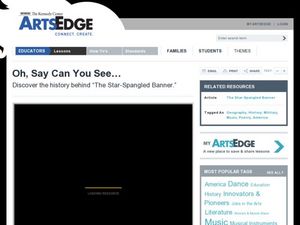University of Minnesota
Blind Spot
Your eyes each work independently, so how do we only see one image? The quick hands-on experiment encourages young scientists to test their blind spots on each eye individually. After learning where the blind spot is and why it exists,...
Nemours KidsHealth
Vision
From the iris and retina to glasses and contact lenses, learners will be excited to see what activities are in store for them as they learn about the complex organ of the human eye.
Curated OER
Light 3: All Those Seeing Color, Say Eye!
Middle schoolers explore the nature of light. They use on-line articles and a worksheet to explore the roles of the eye and brain in the perception of color. They draw and label a diagram illustrating the movement of light.
Curated OER
The Light for Sight
In this eye and light activity, learners make models of the eye using black and white cardboard, a light source, and a bowl of water. They explain how each part of the model corresponds to a part of the eye. Students answer 4 discussion...
Curated OER
Technology and the Human Eye
Fifth graders compare technology and the human eye. In this science lesson, 5th graders label the parts of the human eye and trace the path of light as it travels through the eye.
Curated OER
The Senses
In this senses worksheet, students use the terms listed on the eye to label the figure and describe how light entering the eye becomes an image seen. Then they name the three main sections of the ear and explain what the cochlea does.
Curated OER
Oh, Say Can You See
Young scholars explore different parts of the eye and functions of each part through a video and a dissection of a cow's eye. They discover different causes of blindness.








